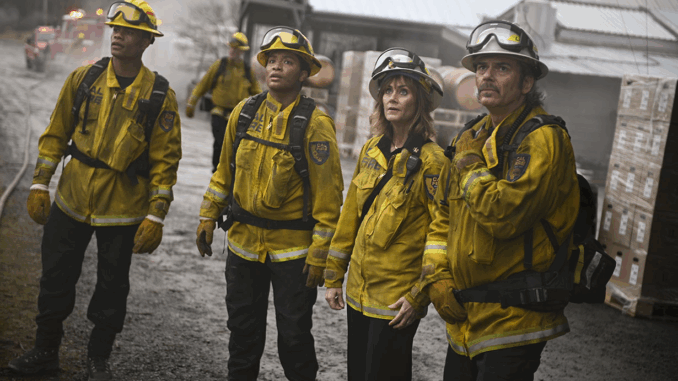
Firefighting Behind Bars: A Story You’ve Never Seen on TV
One of the most surprising—and groundbreaking—elements of Fire Country is its portrayal of inmate firefighters. This isn’t fictional fantasy. It’s based on a real, little-known program in California, where incarcerated individuals risk their lives battling wildfires.
And for the first time on primetime television, Fire Country brings these stories to the front lines. It’s not just entertainment—it’s a window into a system rarely talked about, and it’s changing how viewers think about justice, labor, and rehabilitation.
Inspired by Reality: Max Thieriot’s Vision
Max Thieriot, the series’ co-creator and star, grew up in fire-prone areas of California and had close ties to Cal Fire. But what inspired him most was the underground bravery of the inmate crews fighting alongside professionals with little recognition or protection.
He used this real-world foundation to craft Fire Country as both a character drama and a social commentary. And it works—viewers are gripped not just by flames, but by the moral dilemmas the show ignites.
Breaking Stereotypes About Inmates
Most portrayals of prisoners on TV lean into clichés—violence, manipulation, gangs. But Fire Country takes a different approach. It shows inmates as people, with regrets, dreams, and courage. These men risk their lives for minimum pay and minimal freedom, and the show dares to ask: Shouldn’t that count for something?
Bode Donovan is the embodiment of that question. He’s not perfect. He’s impulsive, sometimes reckless. But he’s also loyal, brave, and desperate to change. Watching his transformation forces the audience to challenge their own assumptions about crime and rehabilitation.

Powerful Female Voices in a Male-Dominated World
Another reason Fire Country stands out? Its fierce and layered female characters. From Sharon Leone, the fire chief with a sharp mind and huge heart, to Gabriela, a woman fighting to make it in a male-dominated space, the series doesn’t just include women—it elevates them.
These women aren’t side characters. They’re leaders, decision-makers, and emotional anchors. In a genre often filled with testosterone, Fire Country balances strength with vulnerability in a way that feels revolutionary.
The Fires Are Real—and Terrifying
From a production standpoint, Fire Country delivers some of the most realistic and cinematic wildfire sequences ever seen on television. The flames feel real. The panic is palpable. And the danger is constant.
The show consults with real Cal Fire professionals to choreograph these scenes. They capture the chaotic beauty and brutality of fire—making the stakes feel authentic and immediate.
Opening Eyes to Real-World Inequities
The show doesn’t shy away from uncomfortable truths. Inmates fighting fires in real life earn as little as $2–$5 a day, and often aren’t allowed to join fire departments after release. Fire Country puts a human face on this injustice and opens conversations that most people have never considered.
It’s not just a show—it’s a social wake-up call.
Conclusion: A Fire Worth Watching
What makes Fire Country so addictive isn’t just its action or romance—it’s the truth buried beneath the storytelling. By shining a light on the hidden heroes of California’s firelines, it becomes more than a TV drama—it becomes a voice for the voiceless.
If you want a show that thrills you, moves you, and makes you think twice about what justice, courage, and change look like—Fire Country is that show.
